UPDATE: Birmingham was awarded the 2021 World Games on January 22, 2015.
 “You know, baseball isn’t an Olympic sport for 2020.”
“You know, baseball isn’t an Olympic sport for 2020.”
I smirked as I said this during a chance encounter with David Brewer, executive director of the Friends of Rickwood Field, as we stood looking out at home plate in America’s oldest ballpark late Monday morning.
He laughed and said, “You know, you’re right,” as he returned to the never ending list of to-dos associated with his job, leaving me to think. I often find myself there in the historic structure on the city’s west side sitting in the general admission seats (or the first base dugout) in order to escape and think. This time, I tried to calm my mind to tackle some brainstorming but ended up dreaming big dreams. (It’s a bad habit of mine.) I thought of what it would be like to sit in the stands at Rickwood Field and Regions Field surrounded by others from around the world in 2021. It would take the International Baseball Federation successfully campaigning the International World Games Association to be added as a sport or a request of the city’s organizing committee, but there’s a chance…
 No, I’m not insane. Word of the city’s intention to submit a bid to host the 11th World Games in 2021 spread like wildfire on Sunday morning. People were still taking a breath from hearing of its bid to host the 2016 Democratic National Convention on Friday. These are noticeably bold moves in the midst of evidence of the city’s long-sought renaissance finally taking shape. I brought up during a quick exchange via Twitter that the potential resulting benefits and impact sound similar to those previously floated by a certain former mayor. The response: “Same thinking, but more realistic.” Hindsight is always 20/20 though and I’ve got a feeling historians will look at both situations as examples of the city taking a risk.
No, I’m not insane. Word of the city’s intention to submit a bid to host the 11th World Games in 2021 spread like wildfire on Sunday morning. People were still taking a breath from hearing of its bid to host the 2016 Democratic National Convention on Friday. These are noticeably bold moves in the midst of evidence of the city’s long-sought renaissance finally taking shape. I brought up during a quick exchange via Twitter that the potential resulting benefits and impact sound similar to those previously floated by a certain former mayor. The response: “Same thinking, but more realistic.” Hindsight is always 20/20 though and I’ve got a feeling historians will look at both situations as examples of the city taking a risk.
That said, this current proposal is a little easier to swallow for folks and easier to celebrate if successful (especially since it would be during Birmingham’s 150th birthday, but I digress). While the World Games started as a way to focus more on the athletes and less on keeping score among nations, they have come to be as significant in meaning to the host city as a successful Olympic bid without nearly the same level of expense.
Why? Here it is, courtesy of the bid packet:
In fact, the Rules of The World Games stipulate that the games must be staged at existing venues, or at venues that have been planned and built regardless of the bid for TWG.
This means that while the multi-purpose facility (a.k.a. the Dome) is probably going to happen, it’s not affecting this bid one way or the other. That can be also read as it doesn’t necessarily mean facilities can’t be renovated or modernized in order to accommodate events. This suddenly makes things like seeing a City Council agenda item for a feasibility study of Legion Field earlier this year more understandable (especially when coupled with the mayor’s comments during this year’s State of the City address).
This is a city that needs an excuse to light a fire under itself to get something accomplished. It also needs reassurances from outsiders. This would seem to accomplish both while, as said elsewhere previously, leaving the city in a better place if the bid proves unsuccessful.
The DNC bid was due last Friday, June 6 (and some have already written about its potential for success, including this piece on June 9 by Cliff Sims at Yellowhammer News and this one published on June 8 by Chuck Dean of al.com/Alabama Media Group). The World Games bid is due on July 31. Once it’s arrived in Colorado, the hard part begins. We have to keep dreaming big dreams and acting on them.
After watching this recap video from the 2013 World Games in Cali, Colombia (or photos like this one from its closing ceremonies), I’m thinking it shouldn’t be too hard to do.
BTW – it should be noted that American football was chosen as one of the invitational sports for the 2017 World Games in Wroclaw, Poland. Just saying…
André Natta is the stationmaster for bhamterminal.com.





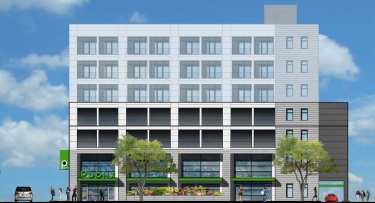 The term “game-changer” has been batted about metro Birmingham a lot in recent days as news of a planned mixed-use development anchored by a Publix grocery store on the city’s Southside spread like wild fire. For those who haven’t heard yet,
The term “game-changer” has been batted about metro Birmingham a lot in recent days as news of a planned mixed-use development anchored by a Publix grocery store on the city’s Southside spread like wild fire. For those who haven’t heard yet, 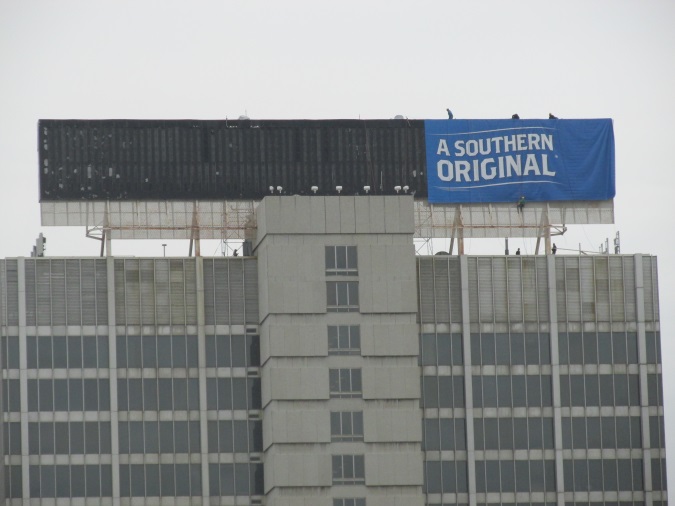 St. Patrick’s Day reminds me I’m a product of Catholic schools in New York City.
St. Patrick’s Day reminds me I’m a product of Catholic schools in New York City. 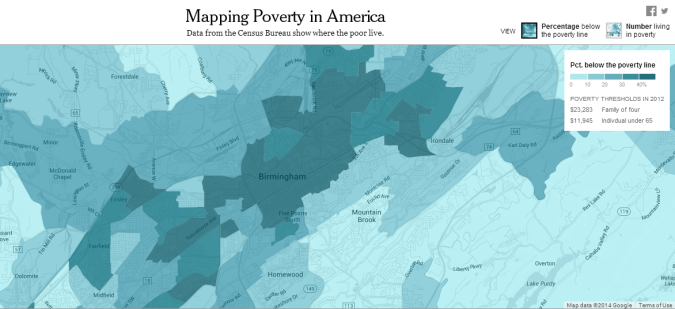
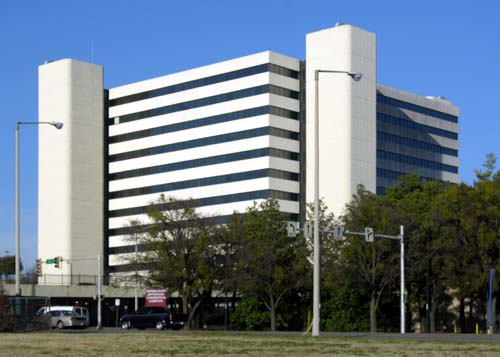 There’s been a great deal of conversation about the proposed lease agreement that would see the City of Birmingham occupy more than 263,000 square feet of space in
There’s been a great deal of conversation about the proposed lease agreement that would see the City of Birmingham occupy more than 263,000 square feet of space in 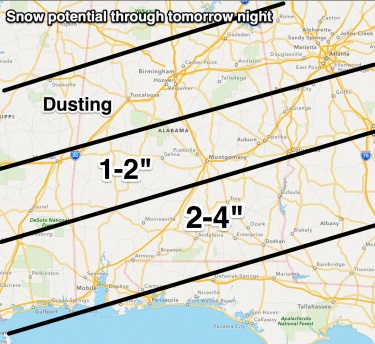 The image to your left is representative of the graphics used by many media outlets in north central Alabama on Monday evening. As you can see, Birmingham and the majority of its surrounding area was only forecast to see a “dusting” of snow. The area that was predicted to receive the brunt of the storm was the southern portion of the state (mostly areas south of Demopolis),
The image to your left is representative of the graphics used by many media outlets in north central Alabama on Monday evening. As you can see, Birmingham and the majority of its surrounding area was only forecast to see a “dusting” of snow. The area that was predicted to receive the brunt of the storm was the southern portion of the state (mostly areas south of Demopolis), 

Changing the South means changing the attitude
NOTE: I wrote a response to a post shared on Facebook earlier today and felt the need to write this (exceedingly long) addition to/explanation for it.
I almost didn’t go out at all on Friday night. The plan was to crash on the couch after a week of attempting to prove to my laptop who was boss — and losing. A night at home would help me regroup and be ready to play catch up over the weekend.
This meant I was choosing to skip the first Art on the Rocks! of 2015 (complete with preview access to the Hale Woodruff exhibit fresh off a visit to the Smithsonian); three chances to see Garth Brooks and Trisha Yearwood at the BJCC (or a musical); three Barons home games (though I did see the fireworks post-game on Friday from the porch); a screening of Monty Python and the Holy Grail at the Alabama Theatre; and buying a ticket for the first ever heavyweight title fight held in Alabama. That was just what was available in greater downtown (Beer on the Back Porch at Ruffner Mountain was pretty tempting as well on Friday).
Then, Mike Fourcher’s face popped up on my phone:
“Hey, man,! I’m in Bham. Where should I go out?” His phone number followed.
Mike is one of the folks behind Aldertrack, a must-read for political junkies in Chicago, IL. He’s also part of a group of peers I often forget are accessible as I continue to maneuver through the world of journalism, first meeting during the inaugural Block by Block Community News Summit in Chicago nearly five years ago.
I sent a message back saying he’d picked one of the craziest weekends to be visiting. Before I could get the next sentence started (stupid thumbs), he replied:
“I’m here for the Wilder-Molina fight.”
Forty minutes later I find myself sitting on the patio in front of Carrigan’s Pub with Mike and four others. There was a married couple from Texas, another woman, and a guy I later found out was from Queens.
I was asked what I did for a living. I told them about this site and then mentioned my new job working for the Southern Education Desk project. There was some interest in The Terminal, but most of their eyes looked intrigued by the work of the SED — then I found out what they all did for a living…
This is how I ended up having a conversation about the current and future state of Birmingham and issues involving education across the south with Eric Molina’s wife (an A.P. History teacher) and two of their friends (both principals). The guy from Queens was Molina’s attorney. There was no pomp, no fluff. Just a party of six enjoying great local beers (Good People and Cahaba, for the record) and great conversation.
I grew up in a city natives refer to as “the Greatest City in the World” and spent eleven years soaking up life in “the Hostess City of the South.” This September will mark eleven years in Alabama’s Magic City, though I often refer to it as “the City Built to Change the South.” It has done just that on numerous occasions, for better and worse. While some of the episodes many would like to forget were mentioned during the 2+ hours on the patio, most of it was focused on the potential, the progress, and the lessons Birmingham still teaches today.
They enjoyed what they’d already seen and hoped to do things like the Civil Rights Institute as well, wanting to see the important places of history, but also the progress. They felt privileged to be here, excited for the opportunity.
We live in the youngest major city in the southeastern United States, but one with a legacy and road map continuing to influence communities much older, albeit not without some longing for it to live up to its original nickname. Time can often be a brutal and unfair thing as it must pass for things to move forward. The city and the region is still positioned to change the South while still being Southern, leading to conflict among those wishing that wasn’t exactly the case.
There is a scarcity still faced by many in the community, leading some to question our priorities as we continue the process of remaking our city. There’s a fight though — a willingness to change the script and forge ahead, to leading or find a way to do something better. It’s still a scrappy community making big waves, and while many of us are the better for it, many more hope we continue to find ways to include more in the progress and the conversation.
Starting down the slippery slope of whether or not we’re a destination city isn’t necessarily where the conversation needs to currently live. Perhaps it’s about whether or not we’re worthy as a city to continue to dream and push forward so we have the attitude that accompanies being the destination actually shared by more than a few select people. Talking about our place in history should be accompanied with what we’ve done to build on it (& what still needs to be accomplished as we truly start to move forward).
It’s catching though, this positive attitude. This photo shows the property catty-corner of Cotton’s in downtown Ensley. There’s a community willing to dream big enough to think of respected artists designing murals for the wall of the Bethesda Life Center, the building of flower beds, and the belief a place is what you think it can be. It’s everywhere you’re willing to look for it — and tap into it. It may take a lot longer than you’d like, but it’s there for the taking — and for feeding off of if you ever begin to worry.
The energy from the conversation on the porch reminds me just how much fun it can be around here — when you want it to be. Do some egos need to be checked at the door? Yes. Does a can-do attitude need to see the light of day in the hearts and actions of the community as a whole? Absolutely.
We’ve changed the South before. Perhaps feeding off the excitement and the potential while finding opportunities for all will help us do it one more time and continue to help us do so for as long as we’d like.
Leave a comment
Posted in Birmingham, Commentary